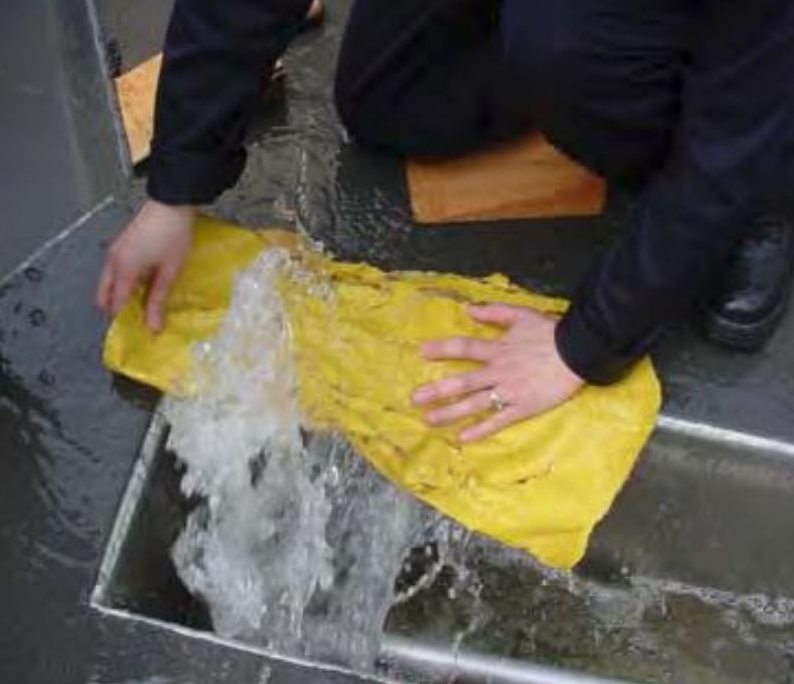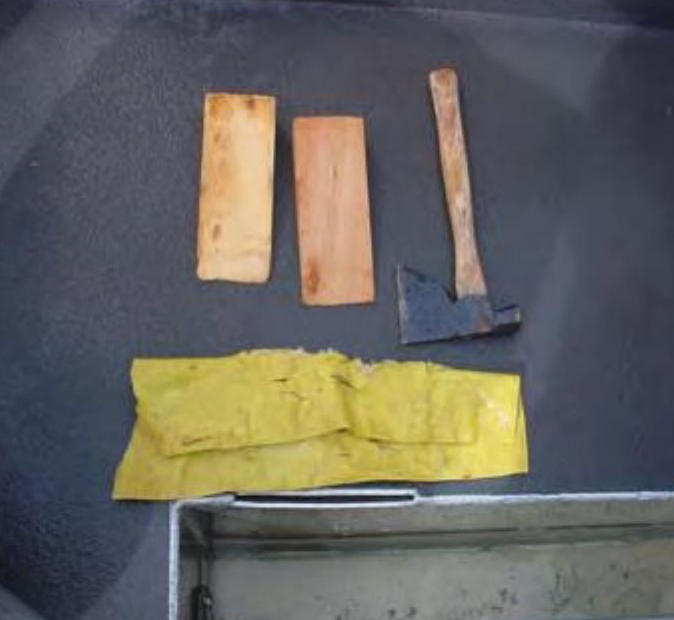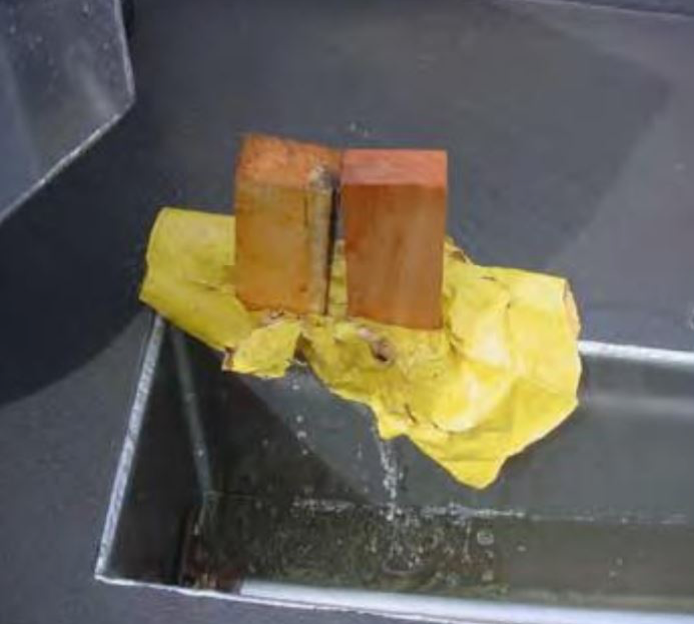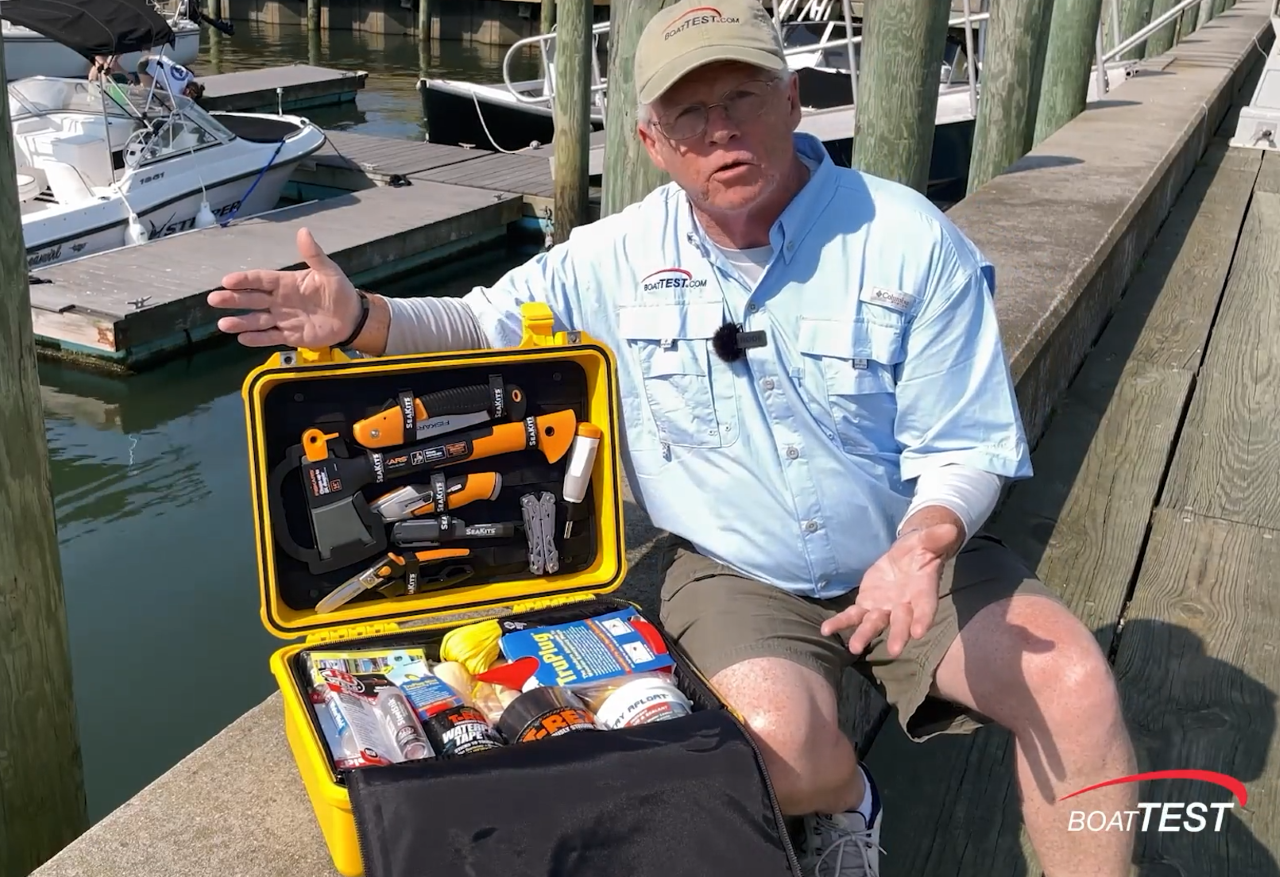How to Handle a Hull Breach: Think Fast

Boaters can’t wait for help if there a small hull breach, chafed hose, broken through-hull fitting or a split pipe. Building your own damage control kit can be the difference between the boat sinking or getting back to shore safely. The U.S. Coast Guard Auxiliary offers practical advice for saving the day. In Part 1, we’ll look at how to handle hull breaches.
Even the best maintained boat can have structural or mechanical issues on the water, which is why a captain must be prepared to do damage control until safely back on land or help arrives.
A small hull breach or a leaking hose can quickly turn into a catastrophic problem unless quickly dealt with. The United States Coast Guard Auxiliary offers tips on overcoming common failures that can occur out on the water.
Why Small Hull Breaches Happen

If a small hull breach occurs, chances are the boater will never see it coming. Most strikes involve logs or debris submerged just below the surface, said BoatUS, which provides towing and insurance services.
Unless boaters develop X-ray vision, there is little boaters can do to prevent an underwater strike except avoid waterways prone to debris, especially after a storm.
Older models that have wood stringers and bulkheads are susceptible to structural failure, which can create a hull breach. Unlike logs floating under the water, the potential failures can be found before it happens with the assistance of a professional.
The inspector will use a flashlight to look where the hull and bulkheads meet. Wood stringers that soak up water will swell and causing the fiberglass to crack and fracture. A few hairline cracks are to be expected but if the stringers are separated from the hull, the boat is unsafe and should not be operated.
Tools to Stop a Hull Breach

Just as important as having lifejackets onboard a boat, mariners should have a small kit to stop a hull breach. Keep the materials in a dry bag tucked away but easy access in case of an emergency.
The bag should contain:
- Soft wooden wedges are used to plug cracks and other small hull breaches.
- Pine and fir are idea for wedges because the wood is more likely to conform to the shape of the hull breach, will absorb water and swell increasing the effectiveness of the plug.
- An old sleeve from rain gear to stuff into the crack.
Boaters can assemble their own kits or purchase one online.
Stopping a Hull Breach

A hull breach requires immediate attention and having the right tools can promptly remedy the situation. The goal is to stop the leak. In reality, it will be more likely slow the leak.
Here are a few tips to stopping a small hull breach:
- Pound wedges into the breach with a hammer.
- Soft wood wedges are easiest to split with a hatched for filling small space.
- The wedges may be sawed off at the base to prevent inadvertent removal.
- It’s always a good idea to put first put some filler into the crack. This will provide a better watertight seal.
The goal is to get everyone safely back on land and the boat on the trailer. Worry about the repair bill later. In Part 2, we'll look at how to stop leaks that occur in pipes, through-hulls and exhaust.
SeaKits to the Rescue

Happily, there is a better way to stem the flow of water aboard than searching around for cloths and bedding to try to stop water flow. It is called SeaKits and it has been stocked with virtually everything needed to stanch in-coming water. Everything in the kit is first rate and it contains the tools necessary to implement temporary fixes. In most cases, it has several different methods of repair.
Perhaps most important, and of the tools and items necessary in an emergency, are in one waterproof container that is easily seen in an emergency. The very nature of having the kit ready to go can only have a calming effect on the person rendering the repair. All of the equipment and tools in the kit have been vetted by marine damage-control experts, and the kit is recommended by BoatTEST.
For a complete description of the SeaKit products, go to the SeaKits website…